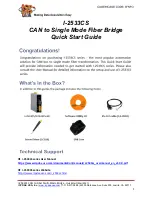
Section 10: Calibrating the Model 9100: Calibration Mode
10.2-13
Final Width = 215mm
10.2.6.2
Cal Mode Function Screens
Output-value control in the CAL mode of each function screen is essentially the same as
for normal operation of the function. For example, the x10 and
÷
10 softkeys respectively
multiply and divide the currently displayed output value by 10, the
±
key changes the
polarity of the output, and the ZERO key sets the output to zero. There is no 'Deviation'
(
∆
%) or 'Offset' (
∆
V,
∆Ω
etc.) key, but there is a new softkey, which appears only in CAL
mode, labelled TARGET.
In CAL mode, the purpose of the function screens is simply to allow you to set the 9100
into the various 'hardware configurations' required during calibration.
10.2.6.3
'Hardware Configurations'
Although all functions in the 9100 appear to the operator to have a single continuous range
which covers the entire span of output values from the lowest value to the highest value (for
example, for DC Voltage from -1050V to +1050V), the 9100 has internal devices such as
voltage dividers and power amplifiers which must be switched in and out of its circuitry to
achieve some parts of this total span. As each of these circuits is switched in or out, the
'hardware configuration' of 9100 therefore changes.
Because each of these circuits also introduces slight offset and gain errors into the 9100
output, these errors must be compensated in order to maintain the 9100's very high level of
performance. Calibration of the 9100 allows the offset and gain errors associated with each
'hardware configuration' to be determined, so that they can be digitally compensated for by
the instrument's embedded control microprocessor. The microprocessor does this by
applying digital correction factors to the output value selected by the operator, so that the
9100's actual analog output accurately matches the selected value. The result is a highly
accurate and linear output response across each function's entire output span.
Individual 'hardware configurations' are calibrated by accurately measuring their analog
outputs at two or more points using a higher order calibration standard (for example, a
long scale length 'standards laboratory' digital multimeter). In most cases these 'target
calibration values' are values close to the negative and positive extremes of the hardware
configuration's output capability (for example at -1000V and +1000V for the DC Voltage
function when the power amplifier is switched in.)
















































